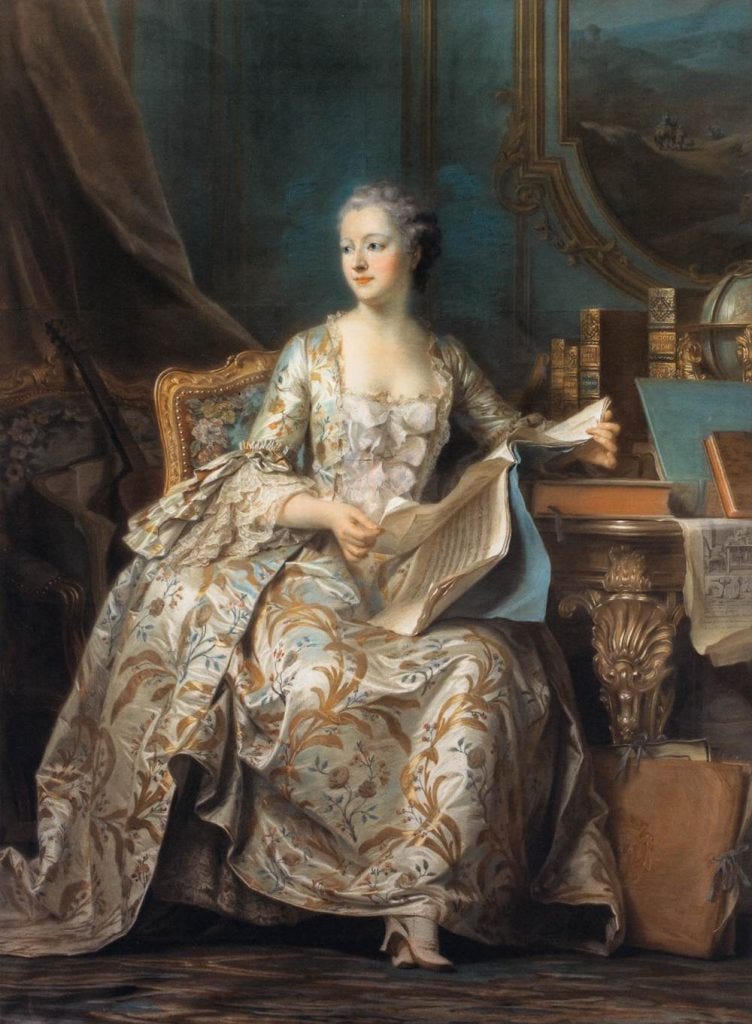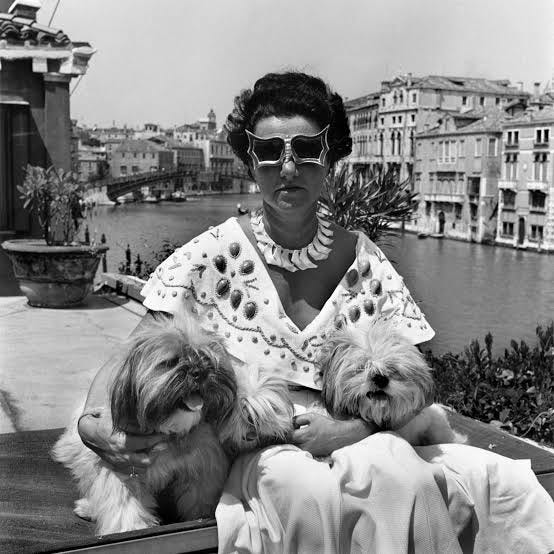Women in art you should know
Get to know these matrons of the arts who didn’t just dabble in the art world, but reshaped it.
From hosting Parisian salons that launched modernism to championing surrealist underdogs, their influence created lasting legacies. Meet the trailblazers, tastemakers, and cultural powerhouses whose stories continue to inspire.
Guest written by our very own Kristin Collins!

1. Gertrude Stein
The literary It-Girl who turned her Paris apartment into the birthplace of modernism.
Our it-girl! An American in Paris, Gertrude Stein is a foremost inspiration behind Salon 21’s mission.
Stein’s legacy lies in her vision to create a space where art and ideas could thrive. She believed art should feel lived in, personal, and alive. Stein is notorious for transforming her Paris apartment into the first real art salon, where artists, writers, and thinkers gathered to exchange ideas, inspire one another, and challenge creative boundaries. *cough cough, sound like somewhere we know?* Stein set the tone that art should spark conversations and challenge perceptions, a philosophy that continues to inspire the spirit of Salon 21 today.
Her gatherings gave rise to the concept of the modern art salon. Artists like Picasso and Matisse, once considered radical, found support and encouragement within her circle. For Stein, art was not about perfection but about connection, conversation, and even a little disruption.
Her ability to create a space where creativity could flourish is why she remains a symbol of innovation and connection, making her the perfect muse for what we aim to be. She made space, both physically and figuratively, for artists to take risks and change the world through her matronage.
Find her in NYC: Pablo Picasso’s Portrait of Gertrude Stein (1906), which captures her striking, confident gaze, is part of The Met’s collection.
If she were here today: She’d be sipping a gimlet at the National Arts Club, passionately debating modern art with a group of writers and artists who hang on her every word. (here’s a fun cocktail named after her that you should try at home)
2. Peggy Guggenheim
The fearless Virgo tastemaker who redefined the role of a collector in shaping modern and surrealist art.
Peggy Guggenheim’s connection to the famous Guggenheim Museum in NYC is more of a family coincidence than a personal contribution. While her uncle, Solomon R. Guggenheim, founded the museum to showcase non-objective art, (art that focuses on shapes, colors, and lines rather than representing real-world objects) Peggy had a different vision. She championed modern and surrealist art, focusing on bold abstraction and dreamlike imagery that explored the emotional and psychological depths of the human experience.
At her Art of This Century gallery in New York during the 1940s, Peggy gave modernist and surrealist artists a platform to thrive. She famously introduced Jackson Pollock to the world, helped solidify Max Ernst as a surrealist icon, and collected works from artists like Marcel Duchamp and Piet Mondrian when others dismissed their significance.
Her fearless taste and bold choices transformed these once-marginalized movements into key pillars of contemporary art.
Find her in NYC: Pollock’s Full Fathom Five (1947), which Peggy helped champion, can be seen at MoMA.
If she were here today: She’d be sipping an extra-dirty martini at Bemelmans Bar, wearing statement jewelry, and fiercely debating which emerging artist deserves to be catapulted into the spotlight next.
3. Élisabeth Vigée Le Brun
The female portraitist who brought intimacy and humanity to royal power.
Élisabeth Vigée Le Brun was an avant-garde artist whose extraordinary talent made her one of the most sought-after portrait painters of her time. As Marie Antoinette’s preferred portraitist, she captured the queen’s charm and elegance in an era dominated by male artists. Vigée Le Brun was unapologetically supportive of women and a true “girl’s girl.” Her 1783 painting, Marie Antoinette en Chemise, broke conventions with its relaxed portrayal of the queen in a simple muslin gown. While celebrated for its intimate approach, the painting also sparked controversy, with critics decrying it as unpatriotic and scandalously immodest.
Beyond her royal commissions, Vigée Le Brun was one of the few women admitted to France’s prestigious Royal Academy of Painting, breaking barriers with her skill and determination. She traveled extensively across Europe, painting aristocrats, intellectuals, and cultural icons, and her work remains celebrated for its delicate brushwork and emotional depth.
Find her in NYC: You can view her Marie Antoinette en Chemise at The Met, where it stands as a testament to the painter’s boldness in redefining royal portraiture.
If she were here today: She’d be enjoying a sachertorte at Café Sabarsky before sketching chic, effortlessly stylish women she spotted in Central Park.

4. Madame de Pompadour
The beauty and brains who shaped the Rococo era.
Madame de Pompadour was a French noblewoman and one of Louis XV’s primary mistresses, but more importantly, she was his formidable advisor, a cultural tastemaker, and intellectual force of her time. Louis XV respected her intelligence and understanding of social nuance, allowing her to function as an unofficial prime minister and trusted confidante. Renowned for her wit and charm, she became a notable conversationalist, cultivating relationships with Enlightenment thinkers like Voltaire and Diderot. Pompadour supported both men and their revolutionary ideas, protecting them from persecution and promoting their works within the French court. Her patronage helped fuel their influence during a transformative period in European thought.
Beyond her political and intellectual influence, Mme Pompadour was a cultural icon who elevated the Rococo style, defined by playful elegance, pastel tones, and intricate details, to its full glory. She championed François Boucher, the leading painter of the era, and helped establish the Sèvres porcelain factory, making French luxury synonymous with her legacy. Notably, “Fragonard modeled [the statue in “The Swing” after] 1757 sculpture L’Amour Menaçant (“Menacing Love”) that Etienne-Maurice Falconet made for Madame de Pompadour…Invoking this work, Fragonard suggested illicit love at the most elite levels of French society.”
Pompadour’s legacy shows how one woman’s taste, intelligence, and love of beauty could shape an entire era and leave a lasting mark on history.
If you’re interested, learn more about Rococo design from a project by Alex Bass at Columbia University here.
Find her in NYC: François Boucher’s Portrait of Madame de Pompadour captures her as a sophisticated woman of intellect and taste. While the portrait itself is housed in Europe, you can experience the essence of Rococo elegance at The Frick Collection. Or for a closer look at the artistry she championed, explore exquisite Sèvres porcelain or view Boucher’s Shepherd’s Idyll both housed at The Met.
If she were here today: She’d be tucked into a velvet booth at La Mercerie in SoHo, sipping a glass of Chablis and charming her dinner companion with sharp observations on art, culture, and design. She’d also probably be strolling around The Met’s Wrightsman Galleries, reminiscing on her former quarters.
5. Lillie P. Bliss
The reserved pioneer who gave us the MoMA.
Lillie P. Bliss was the quiet but essential force behind modern art’s rise in New York City. In the 1920s, when most of the art world was obsessed purchasing up Old Masters, she supported then-”unfashionable” modern artists like Cézanne and Van Gogh, whose works were still considered risky and unconventional. Bliss didn’t just collect their art, she believed it deserved a permanent home and a chance to be appreciated by future generations. She used her resources and vision to help establish the Museum of Modern Art (MoMA) in 1929.
Helping to found the MoMA wasn’t a simple task. Bliss worked alongside a small group of influential women, including Abby Aldrich Rockefeller and Mary Quinn Sullivan, to secure funding, build collections, and shape the museum’s mission. This meant not only using her personal wealth, but also leveraging her connections and her passion for modern art to convince skeptics that the movement was worth investing in.
When Lillie passed away from cancer at the age of 66, she left her personal collection of 150 works of art to the museum. Her collection included masterpieces by Paul Cézanne, Georges Seurat, Paul Gauguin, Henri Matisse, Pablo Picasso, and Amedeo Modigliani. This generous donation (valued at over $1 million in the 1930s) not only solidified MoMA’s reputation, but also provided the foundation for its growth, ensuring modern art would be preserved and appreciated by future generations.
Lillie P. Bliss wasn’t flashy or outspoken, but her quiet determination and genuine love for art changed the cultural landscape of New York City forever. Thanks to her efforts, modern art moved from the fringes to a place of recognition and influence in art history.
Her work in NYC: Cézanne’s iconic painting, Still Life with Apples (1895), part of Bliss’s collection, can be seen at MoMA.
If she were here today: She’d be at The Modern after a private viewing of a new MoMA exhibition, sipping a gin fizz and quietly observing the audience she helped cultivate.







